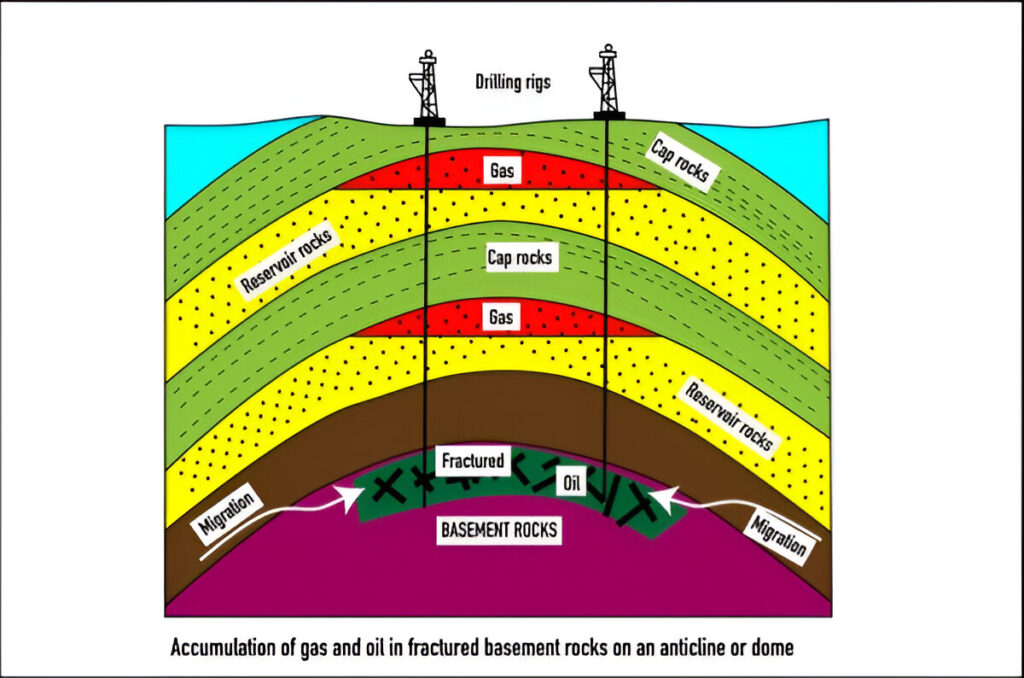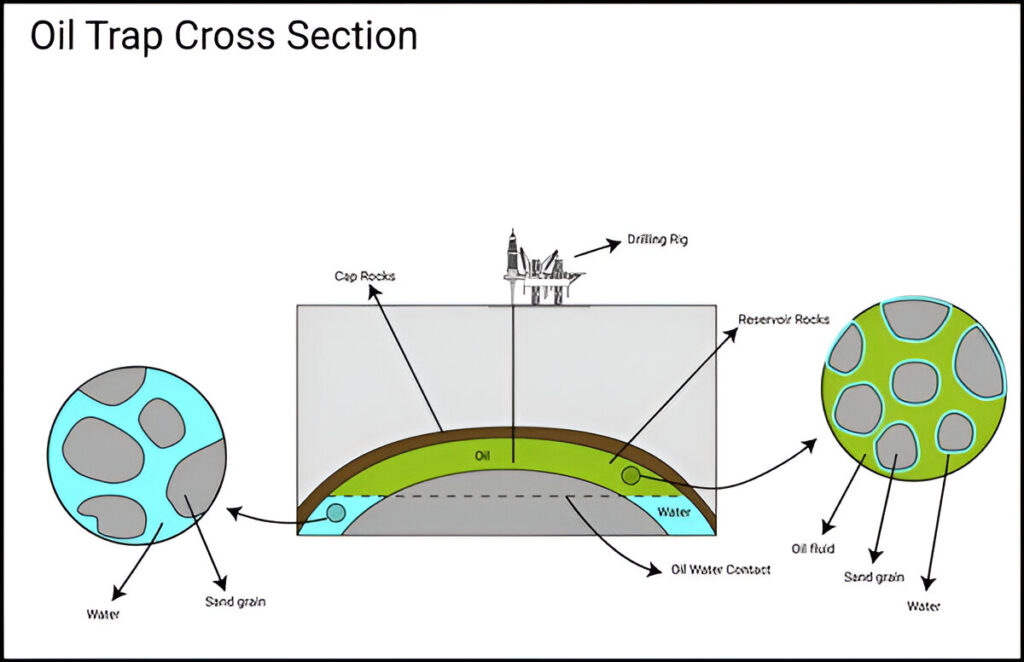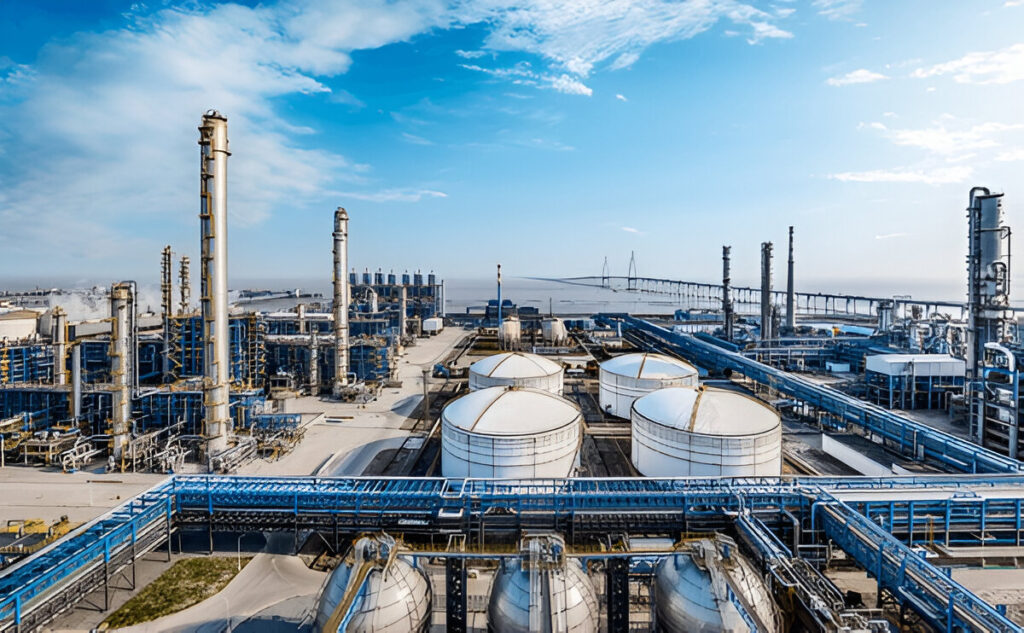What is crude oil? How to Extract Crude Oil Safely and Efficiently
Discover the fundamentals of crude oil, its formation, types, and significance in the global economy. Learn how it impacts energy and industry today.
Petroleum:
Petroleum is oil obtained from the earth. The word “petroleum” is derived from the Latin words Petra (meaning rock) and Oleum (meaning oil). For this reason, petroleum is also called “rock oil.” Petroleum is also known by many names, such as mineral oil, crude oil, crude petroleum, crude, or just oil. While petroleum is usually understood as liquid oil, it also refers to natural gas in rocks and similar substances in an almost solid state. Chemically, petroleum is essentially a compound made of two basic substances: carbon and hydrogen.
Although hydrocarbons are made up of only two basic substances, carbon and hydrogen, they can exist in different forms. This variation is due to the relative ratio of carbon and hydrogen in hydrocarbons and differences in their molecular structures. The simplest hydrocarbon compound, consisting of one carbon atom and four hydrogen atoms, is known as methane (CH₄) gas. Natural gas is primarily composed of methane gas.
As the number of carbon atoms in a hydrocarbon compound increases, it transitions from a gas to a liquid and, with further increases, to a solid. Examples include methane (a hydrocarbon containing one carbon), propane (a hydrocarbon containing three carbons), and butane (a hydrocarbon containing four carbons). Hydrocarbon compounds with more than four carbon atoms are no longer gaseous but become liquid, forming what is commonly referred to as oil.
The difference between natural gas and oil lies in their composition: natural gas consists of hydrocarbon compounds containing 1 to 4 carbon atoms, while oil is composed of hydrocarbon compounds containing more than 4 carbon atoms. Heavier compounds with even more carbon atoms may exist in sediments in an almost solid form, such as asphalt or pitches.
Origin of Petroleum:
The origin of petroleum has not yet been satisfactorily proven. However, many theories have been proposed at different times, most of which are speculative due to the lack of concrete evidence. Any theorizing about the origin of petroleum must provide an adequate explanation for the following aspects of petroleum composition:
- The presence of chlorophyll, haemin, and resin in petroleum.
- The presence of nitrogen and sulfur compounds in petroleum.
- The optical activity of petroleum.
- Its co-location with sodium chloride (brine).
According to Mendeleev’s theory, published in 1876, petroleum is produced by the reaction of metal carbides, such as iron carbides, in the Earth’s subsurface with water under heat and pressure. Moissan, Sabatier, and Senderens supported this theory. However, they could not explain the presence of optically active compounds in petroleum or the occurrence of haemin, found in the blood cells of organisms.
Engler’s theory, proposed in 1900, suggests that petroleum is produced by the decomposition of marine organisms under extreme heat and pressure. Engler was able to produce petroleum-like substances by destructively distilling fish oil and other animal fats under heat and pressure. This theory successfully explains the presence of nitrogen and sulfur compounds, optically active compounds, haemin, and salt water in petroleum. However, it fails to explain the presence of chlorophyll.
According to the modern view of petroleum formation, petroleum is produced by the biodestructive distillation of animal and vegetable matter under high pressure and heat inside the Earth. This theory accounts for the presence of chlorophyll, haemin, resins, nitrogen and sulfur compounds, optically active compounds, and sodium chloride in petroleum. However, the exact conversion process from biomass to petroleum has not yet been satisfactorily proven. It is believed that organic matter decomposes through bacterial action, the influence of natural inorganic fertilizers, and radiation from underground radioactive materials. Petroleum is formed through a process of biodegradation. Until now, the most widely accepted theory of petroleum formation is that the remains of dead animals and plants were buried under deep layers of sand and mud. Over time, these organic materials underwent chemical changes due to heat, pressure, and microbial activity, ultimately converting into petroleum.
In later geological periods, the sandy layers transitioned into limestone-rich sedimentary rocks. Geological changes caused petroleum to become trapped between two impermeable rock layers, known as anticlines, which prevent it from migrating. This formation is referred to as a trap.
Because petroleum is lighter than water, it is found floating on salt water in anticlines. Gaseous matter produced from organic matter also rests on petroleum.

Figure: Location of petroleum in anticlines
The probability of locating oil or natural gas underground in an area depends on the satisfactory coexistence of several geological factors in that area. These issues can be roughly divided into three categories. Namely: source rock, reservoir rock and trap.
Source Rock:
The rock layer in which oil or gas is formed is called the source rock. Two main conditions are required for a rock to qualify as a source rock:
(a) The presence of abundant organic matter (organic richness) in the bedrock.
(b) Achieving thermal maturity by being subjected to high temperatures and pressures while buried underground.
Organic Matter Abundance:
Mudstones (shale) or limestone can accumulate significant amounts of organic matter in favorable geological environments. As the rock is buried deeper beneath the surface, the biological material within it is transformed into oil and gas under conditions of high heat and pressure.
The amount of organic matter in the rock can be assessed by measuring the total organic carbon (TOC) content. To be a source rock, a mudstone must contain at least 0.5% organic carbon, while limestone requires a minimum of 0.3% organic carbon.
Biological material within sandstone can generally originate from two types of sources: marine organisms and plants or terrestrial plants. When buried underground, this organic material first transforms into a complex biological substance called kerogen under high temperatures. At even higher temperatures and pressures, kerogen further breaks down, generating oil and gas
Reservoir Rock:
The rock in which oil is stored and from which it is extracted is called reservoir rock. It is important to note that, although oil or gas forms in the source rock, it does not accumulate there. Instead, it migrates upward and collects in a suitable rock layer nearby or at a short distance, which is referred to as the reservoir rock.
To qualify as a reservoir rock, two main properties are required:
(a) Porosity – the presence of void spaces within the rock.
(b) Permeability – the ability of the rock to allow fluids to flow through it.
The voids within the rock do not form large, empty spaces but are small pores between the minerals in the rock’s natural structure. Generally, sandstone and limestone have higher porosity, making them common reservoir rocks for oil or gas. All gas and oil reserves discovered in Bangladesh so far have been in sandstone formations.
A satisfactory underground reservoir rock typically has a void content of 10% to 25%, although the exact amount may vary.
Figure: Stages of oil and natural gas formation from organic matter in rock formations
A void volume of less than 10% is considered poor quality, 10% to 15% is considered fairly good, 15% to 20% is good, and more than 20% is considered very good quality. The amount of oil or gas that can be stored in a reservoir depends on the void space in the rock.
Permeability refers to the ease with which oil or gas can move through the rock. A rock may have a significant void space, but if oil or gas cannot move within it, the rock cannot be considered a reservoir rock, as extraction would not be possible.
The unit of permeability measurement is millidarcy. Reservoir rocks with permeability values between 10 and 100 millidarcies are considered good, while values between 100 and 1000 millidarcies are considered very good.
Generally, rocks with higher porosity also allow for easier oil or gas permeability.
Trap: The third condition for oil accumulation is the presence of traps. A trap prevents oil from rising from the source rock and helps it accumulate in the reservoir rock. Even if oil is produced underground, in the absence of a trap, it can migrate to the surface through upwelling and be lost as seepage.

Traps can form in different ways within underground rock layers. The simplest type of trap is a structural trap, and a common example of this is a fold in the rock layer, specifically an anticline (an upward fold).
Another essential component for forming a trap is the presence of a cap rock above the reservoir rock. A cap rock, such as shale or similar rocks with negligible void space, prevents oil from migrating further upward. For instance, if a sandstone layer forms uplift and is overlain by a mudstone or shale layer, a trap will form in the sandstone. Oil from a deeper source rock can then migrate and accumulate at the top of the sandstone layer beneath the cap rock.
Traps can also form due to faults, reefs in limestone layers, or variations in the physical properties of overlying rock layers
The Search for Petroleum: A few years ago, people only knew about oil fields that were exposed on the surface. The vast wealth hidden within the earth remained unknown for a long time. The demand for oil was initially met by oil extracted from surface deposits. However, as the great potential of oil became apparent and the demand for fuel increased, this crude oil could no longer be relied upon. A much larger oil field was needed, and so began the search for oil fields. Several methods have since been developed for this purpose.
Searching for underground oil begins with testing the rock layers. Different layers of rock are collected through test drilling or by digging deep pits at various locations. These collected samples are chemically analyzed in the laboratory. The nature of the Earth’s crust can also be revealed by taking images from aircraft or satellites. A geological map of the entire area is then prepared.
Geological experiments often face various obstacles, such as vast swamps, dense forests, or extremely hard bedrock. In such cases, it is not possible to directly test the bedrock. Instead, the seismographic (seismic) or earthquake method is used. In this method, a shallow hole is dug in the ground, and dynamite or explosives are placed in it. The dynamite is detonated at different distances via remote control. The sound of these explosions is reflected back from the different rock layers beneath the ground. These returning echoes are recorded by geophones placed at various distances. The nature and depth of these rock layers can be determined by measuring the time it takes for the sound waves to travel through the different layers.
Sometimes, vibration waves are reflected from the boundary between two rock layers and return to the surface. The depth of this reflective layer can also be determined by the echoes that return from the intermediate layer. Seismic and echo maps are recorded by the geophones and processed by an automated electrical system. By observing these diagrams, the structure of the different rock layers can be understood is available the existence of underground oil reserves is determined from the nature of rock formations. Another method of oil exploration is gravity meter surveys. In this method, information on bedrock is collected by measuring gravity. If the bedrock is parallel to the earth’s surface, gravity will be equal everywhere. If the bedrock is dome-shaped or hump-like, the gravity will be higher there. The gravity manipulation is usually very negligible. But there are instruments sensitive enough to point out this insignificant difference. With the help of this instrument, the humps or domes of the bedrock are identified. Other conditions, such as the presence of oil, can also be detected in the rock layer with this method. This method can also be used to examine the subtle changes in the Earth’s magnetic field to reveal the interior of the crust. All these methods are used less and less to search for ‘floating gold’ hidden underground.
Composition of Crude Oil:
Crude petroleum consists of approximately 43% carbon, 11% to 14% hydrogen, 0.5% to 3% sulfur, 0.1% nitrogen (sometimes up to a maximum of 1%), and 2% to 3% oxygen. Crude oil has an ash content of 0.1% or less. Virtually all metals found in petroleum ash include silica, iron, aluminum, calcium, nickel, and sodium. A small number of crude oils may contain small amounts of vanadium. Sulfur, nitrogen, and oxygen are found as derivatives of hydrocarbons, such as aliphatic mercaptans, disulfides, and aromatic sulfides.
Production of Crude Oil:
Crude petroleum oil is stored underground at varying depths (typically between 500 feet and 15,000 feet). In most cases, this oil is already trapped under underground gas and water pressure. By drilling a well to the oil reservoir level and setting a pipe, the trapped oil accumulates at the base of the well and rises to the surface under its own pressure. Oil is produced from oil wells using simple lift pumps when the gas and oil pressures drop.
Modern oil extraction involves drilling two parallel pipes of different diameters to the reservoir level without using a lift pump. Compressed air is then sent through one of the two coaxial pipes, causing the oil to rise to the surface through the other pipe under the pressure of the air. This crude petroleum is first stored in a large steel tank and then pumped to the refinery, where it is refined, and various grades of oil and products are produc
- Natural Gas:
Natural gas is found dissolved in crude petroleum. It is composed primarily of methane (from the paraffin family), along with small amounts of propane, ethylene, butane, and other light hydrocarbons, as well as some nitrogen and oxygen. - Liquefied Petroleum Gas (LPG):
Propane, butane, and other light hydrocarbons are separated from natural gas by liquefying it when stored under pressure. This is known as LPG. LPG is supplied in cylinders under pressure. - Gasoline:
Gasoline is the lightest liquid of the petroleum fraction. The fractions of crude petroleum that boil at temperatures up to 200°C are generally considered gasoline. Its composition depends on the crude oil and the refining process. The relative density of gasoline ranges from 0.70 to 0.87. It is used as fuel in spark ignition engines. - Kerosene:
Kerosene is a heavier fraction than gasoline. Its boiling range is between 150°C and 300°C, and its relative density ranges from 0.78 to 0.85. It is used in gas turbines, jet engines, lighting lamps, and cooking. - Distillate:
Distillate is heavier than kerosene and is used for fueling tractors and cooking. - Diesel Oil:
Diesel oil falls between kerosene and lubricating oil in terms of weight. Its boiling range is between 200°C and 370°C. It is used as fuel in compression ignition engines. - Fuel Oil:
The relative density of fuel oil is similar to that of diesel due to its distillation range, but its components have a larger range than diesel. It is used as an industrial fuel. - Lubricating Oil:
Lubricating oil is made from petroleum heavy base and residual oils. It is used for lubrication purposes - Tar and Asphalt: Tar and asphalt are obtained as solid or semisolid petroleum distillation residues.
- Petroleum coke: Petroleum coke is used as a solid industrial fuel.
Regions of Various Oil Fields of the World: Crude oil is found in four major regions of the world, typically near landlocked oceans. Crude oil is also classified according to the names of these regions. For example:
- Eastern Mediterranean Basin
- Far East Basin
- Caribbean Basin
- North Polar Basin

The oil fields found in countries in the eastern region of the Mediterranean, such as Iran, Iraq, southern Russia, Arab countries, and Romania, are known as the Mediterranean Basin. The USA, Mexico, Venezuela, and Colombia are part of the Caribbean region. The region between Asia and Australia is known as the Far East Basin, and the oil fields near the Northern Hemisphere are known as the North Polar Basin.
The Future of Crude Oil in a Green Economy
A popular slogan is, “The world is getting smaller.” Is the world really getting smaller? No, the world is not getting smaller at all. However, we can reach one end of the world to the other in a very short time. This is possible due to advancements in science and technology. For instance, America can be reached by air in just 12 hours. The energy that airplanes use to accomplish this feat comes from hydrocarbons, derived from crude petroleum. Safe, cheap, convenient, and small in size, hydrocarbons are by far the most popular source of energy, with petroleum being the main source.
With the development of civilization, the use of crude petroleum is increasing day by day. The United States is the largest petroleum-consuming country in the world, and it is also the most resourceful and advanced country in science and technology. So, as science and technology continue to develop, the demand for crude oil will only rise. But is there enough petroleum in the world to meet future global needs? At the rate at which crude petroleum is being consumed, if this continues, it will be necessary to find an alternative fuel to crude petroleum, if not in the near future, then in the distant future.





